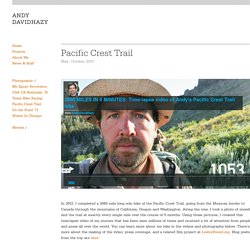

Réimaginer l’Histoire pour mieux la comprendre. Que serait-il advenu si Hitler était devenu un peintre reconnu en 1914, ou si Napoléon avait vaincu à Waterloo ?

Deux historiens proposent de revisiter leur discipline en partant de ce genre de raisonnements contrefactuels. Dans leur ouvrage Pour une histoire des possibles. Analyses contrefactuelles et futurs non advenus, récemment paru au Seuil, Pierre Singaravélou, professeur d’histoire contemporaine à l’université Paris 1 Panthéon-Sorbonne, et Quentin Deluermoz, maître de conférences en histoire contemporaine à l’université Paris 13, tous deux membres de l’Institut universitaire de France, tentent de cerner les conditions d’un usage légitime de l’uchronie dans les sciences sociales.
Ils repensent ainsi les enjeux de la causalité et de la vérité, des rapports entre histoire et fictions, entre déterminisme et contingence, allant jusqu’à ouvrir la voie vers une sorte d’histoire expérimentale. Que ce serait-il passé si la chute du Mur de Berlin n’avait pas eu lieu en novembre 1989 ? Andy Davidhazy. In 2013, I completed a 2660 mile long solo hike of the Pacific Crest Trail, going from the Mexican border to Canada through the mountains of California, Oregon and Washington.

Along the way, I took a photo of myself and the trail at exactly every single mile over the course of 5 months. Using those pictures, I created this time-lapse video of my journey that has been seen millions of times and received a lot of attention from people and press all over the world. You can learn more about my hike in the videos and photographs below. There's more about the making of the video, press coverage, and a related film project at LostorFound.org.
Blog posts from the trip are here. Flickr/Yahoo produced short documentary with interview (broadcast on June 5, 2015) PBS Newshour with Gwen Ifill (broadcast on April 7, 2015) Mile 0. Mile 13. Mile 209. Subjectivité cartographiée strabic.fr. GOTHAM GAZETTE: The Citizen. Language Map “You can walk an entire block in Times Square and not hear anybody speaking English,” said xenophobic Atlanta Braves pitcher John Rocker in an infamous article in Sports Illustrated.

“Asians and Koreans and Vietnamese and Indians and Russians and Spanish people and everything up there.” Though he meant it as an insult, New Yorkers do speak a huge variety of languages. Activists Discover Evidence of St. Petersburg’s River of Poop. The mysterious fragrance of St.

Petersburg's waterways. Images edited by Kevin Rothrock. There’s a river of shit running through St. Petersburg. It starts in a little town called Novoye Devyatkino and flows into the Neva, where it empties into Neva Bay and then the Gulf of Finland. Histoire faune et flore : sentences contre des pourceaux. Lettres de grâce pour un troupeau de cochon. Histoire, magazine et patrimoine. Le procureur ou promoteur des causes d’office, c’est-à-dire l’officier qui exerçait les fonctions du ministère public auprès de la justice seigneuriale, requérait la mise en accusation du coupable.

Après l’audition des témoins et vu leurs dépositions affirmatives concernant le fait imputé à l’accusé, le promoteur faisait ses réquisitions, sur lesquelles le juge du lieu rendait une sentence déclarant l’animal coupable d’homicide, et le condamnait définitivement à être étranglé et pendu par les deux pieds de derrière à un chêne ou aux fourches patibulaires, suivant la coutume du pays. Outline of the Post-War New World Map. Eastern State Penitentiary tells jailed cat-murdering dog's story. Eastern State Penitentiary tells the legend of Pep, the "cat-murdering dog," at weekend event.

Credit Eastern State Penitentiary Eastern State's most famous inmate may not be gangster Al Capone. And it may not be human. Pep, "the Cat-Murdering Dog," was was processed on Aug. 12, 1924. Legend contends then- Pennsylvania Gov. Pep was paw-printed and given an inmate number, C-2559, which is skipped in prison intake logs and records. Lauren Zalut, tour specialist, explained that through correspondence between Pinchot and Warden John Groom historians believe Pep did not live in a cell. "The governor says Pep can be kept in the deputy warden's quarters, and he would have a yard and get plenty of exercise," she said.
Two years after his incarceration, in 1926, Cornelia Bryce-Pinchot issued a statement to the New York Times clearing Pep's name. Whether he was guilty or framed, Pep acted as a mascot for the prisoners to help boost morale. The Drama of Llamas vs. the Gloating of the Goats. It should be no surprise to anyone that we're interested in sheep.

But today we want to continue to mine the possibilities of our IronSheep 2014 dataset to bring you an alternative geography of animals as they are discussed and represented in social media [1]. Focusing on the global level and using a 10% sample of all geotagged tweets created between July 2012 and March 2014, we sought out to understand the global distribution of goats as opposed to llamas.
Mapping the Bacteria in New York’s Subways.
Anecdotes.